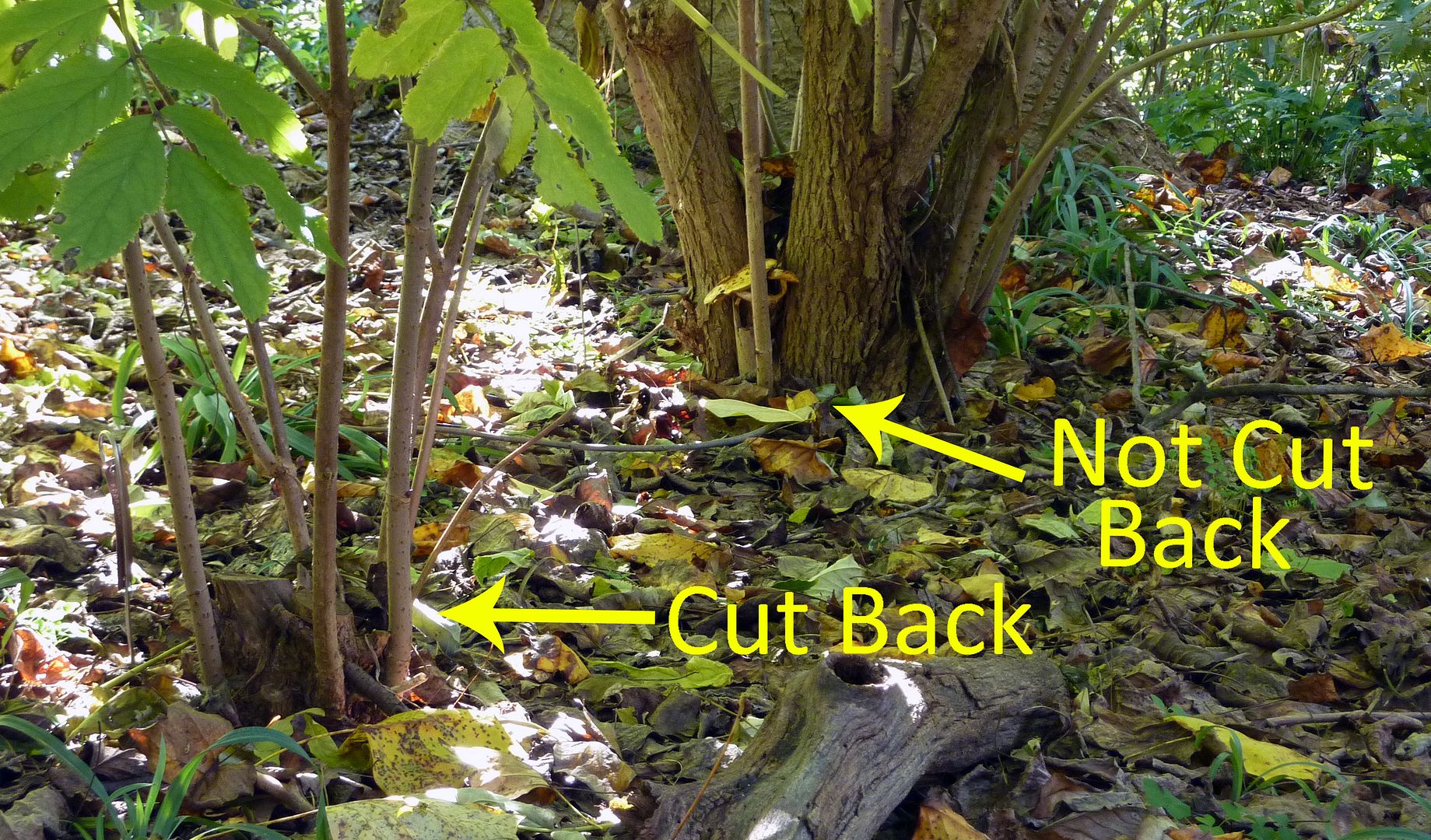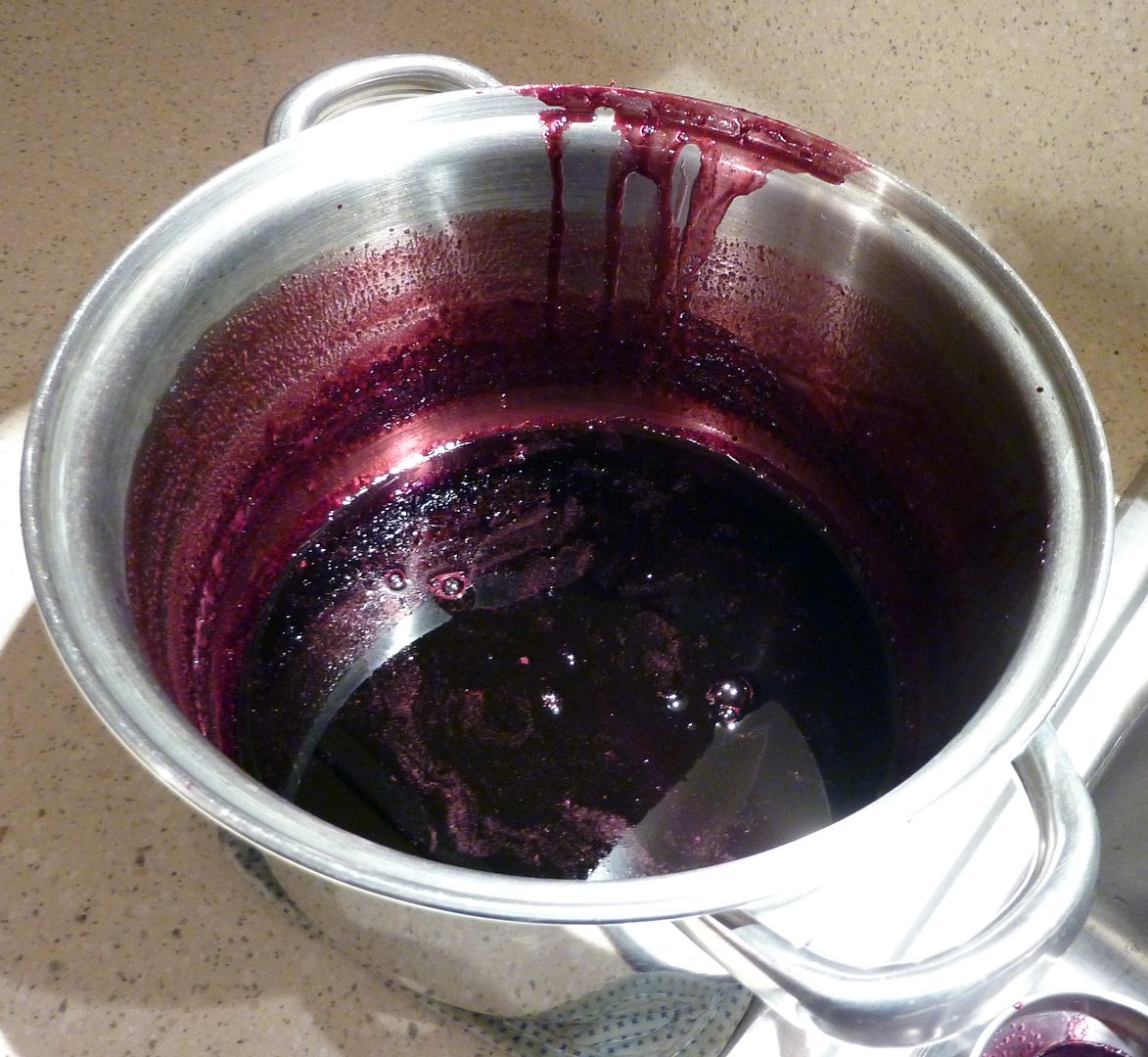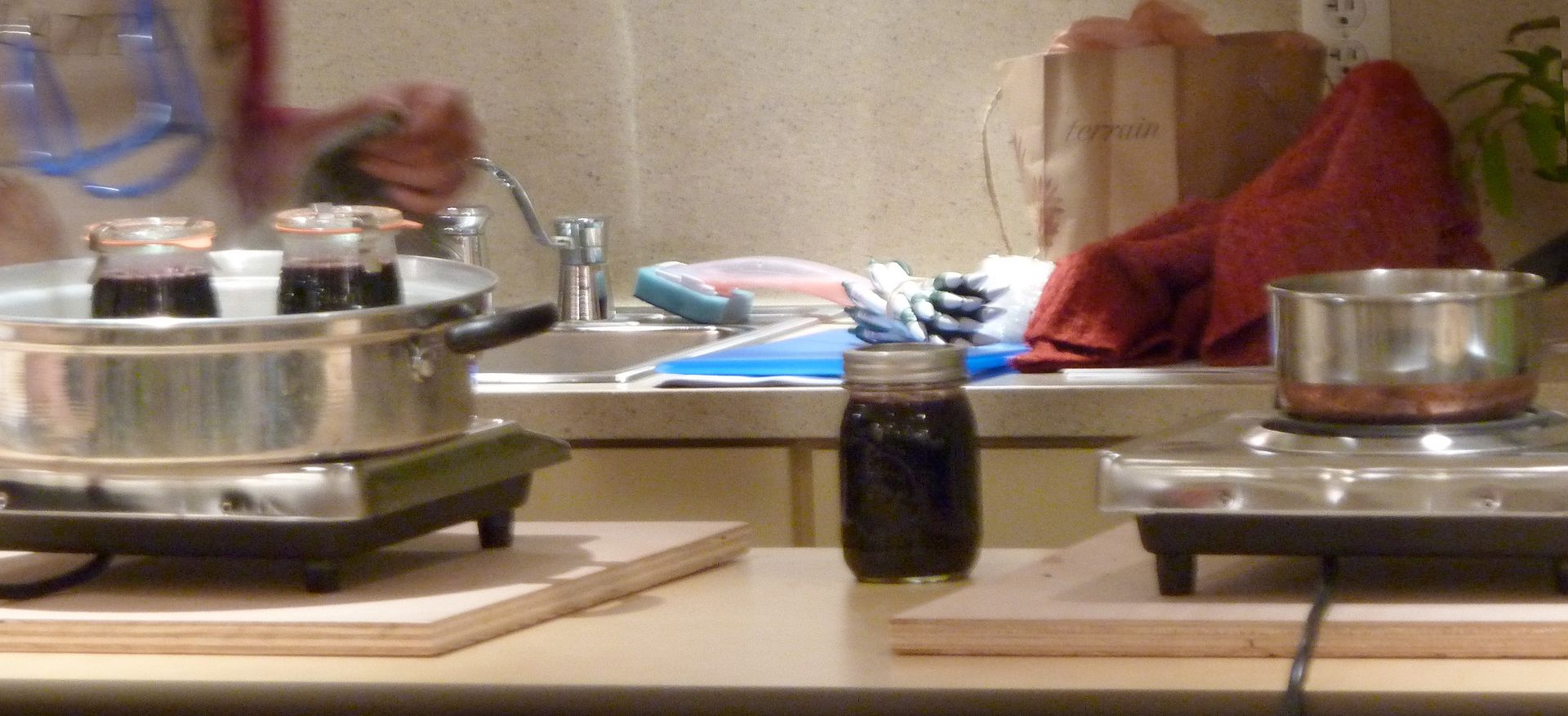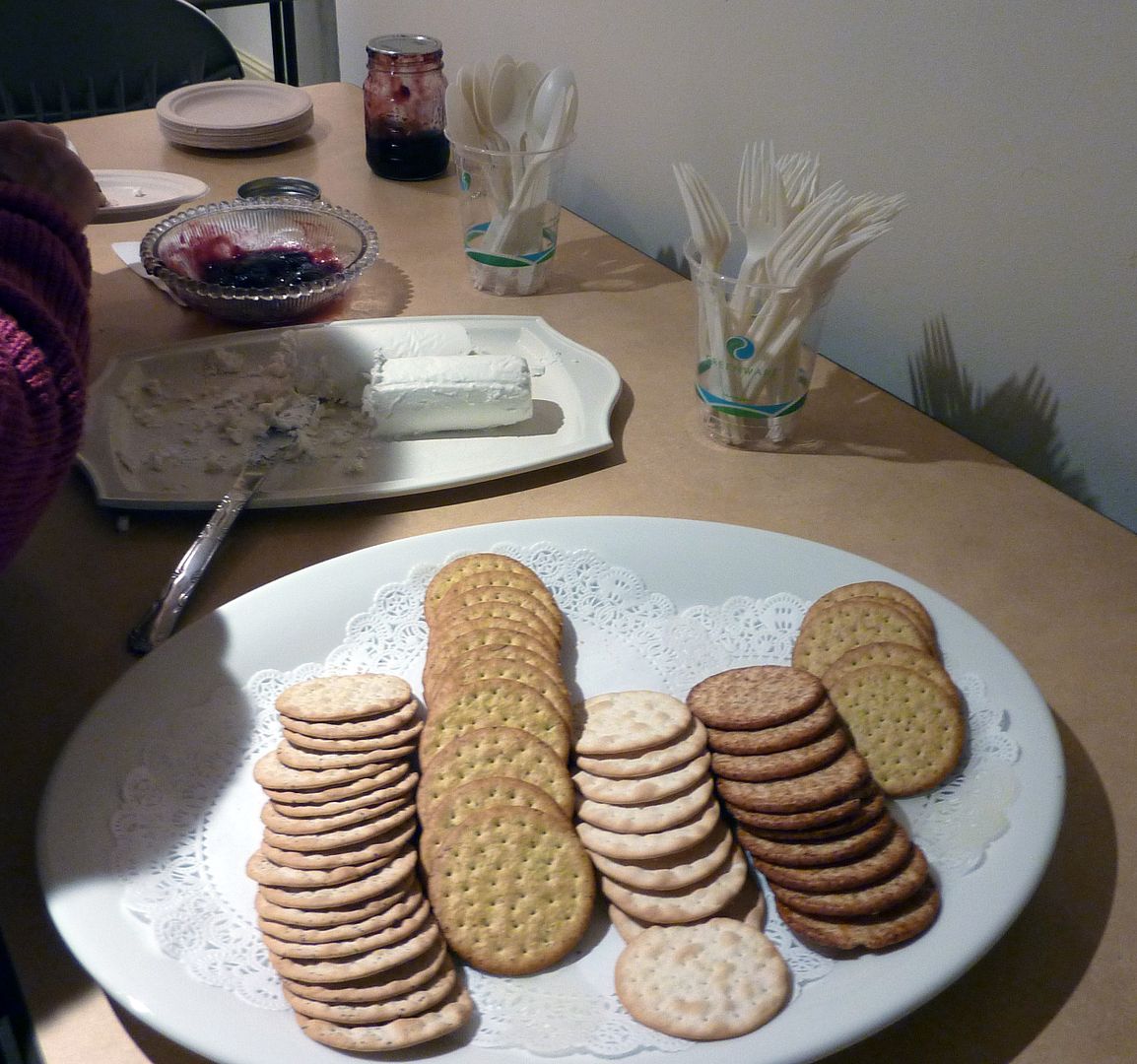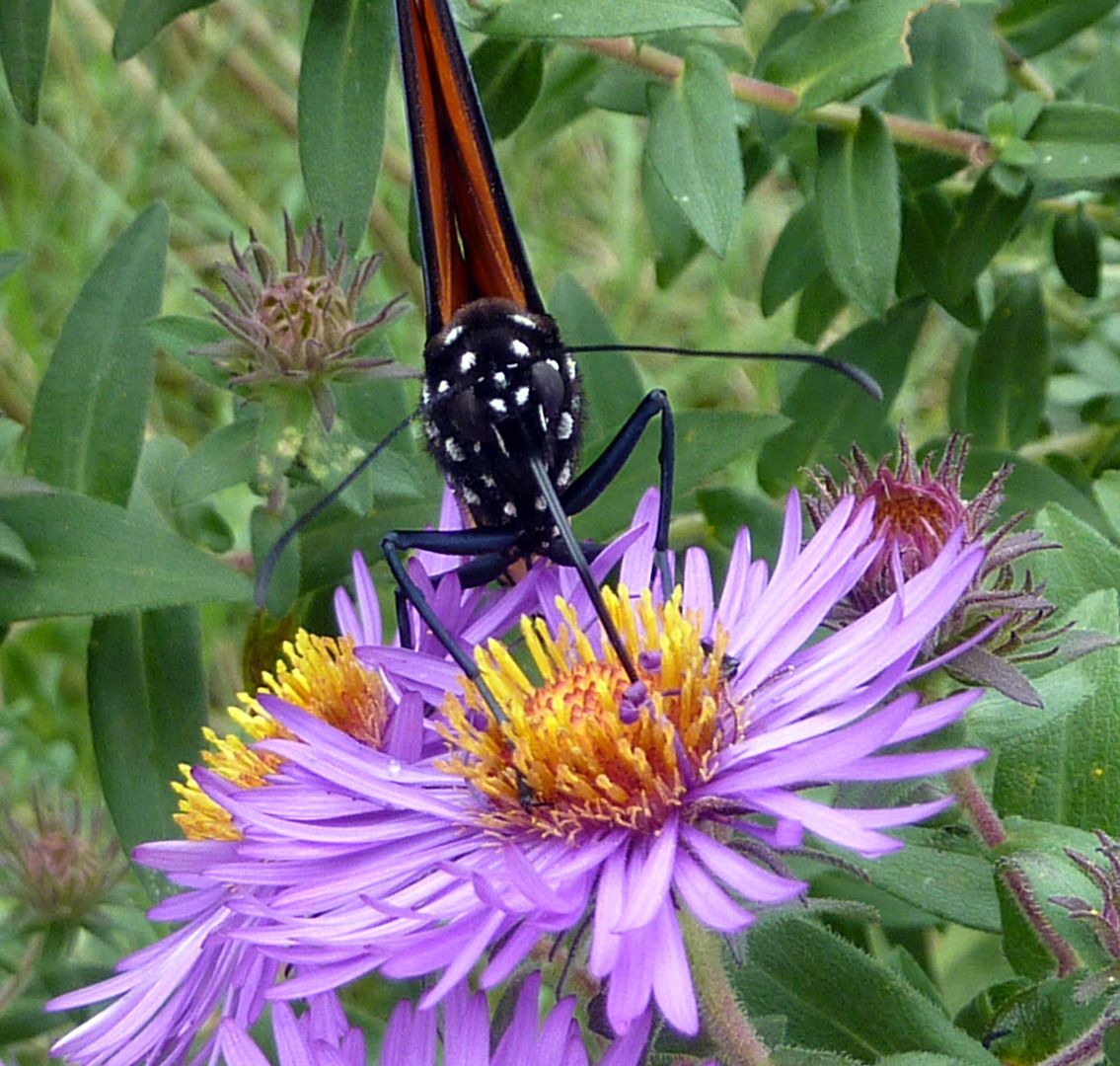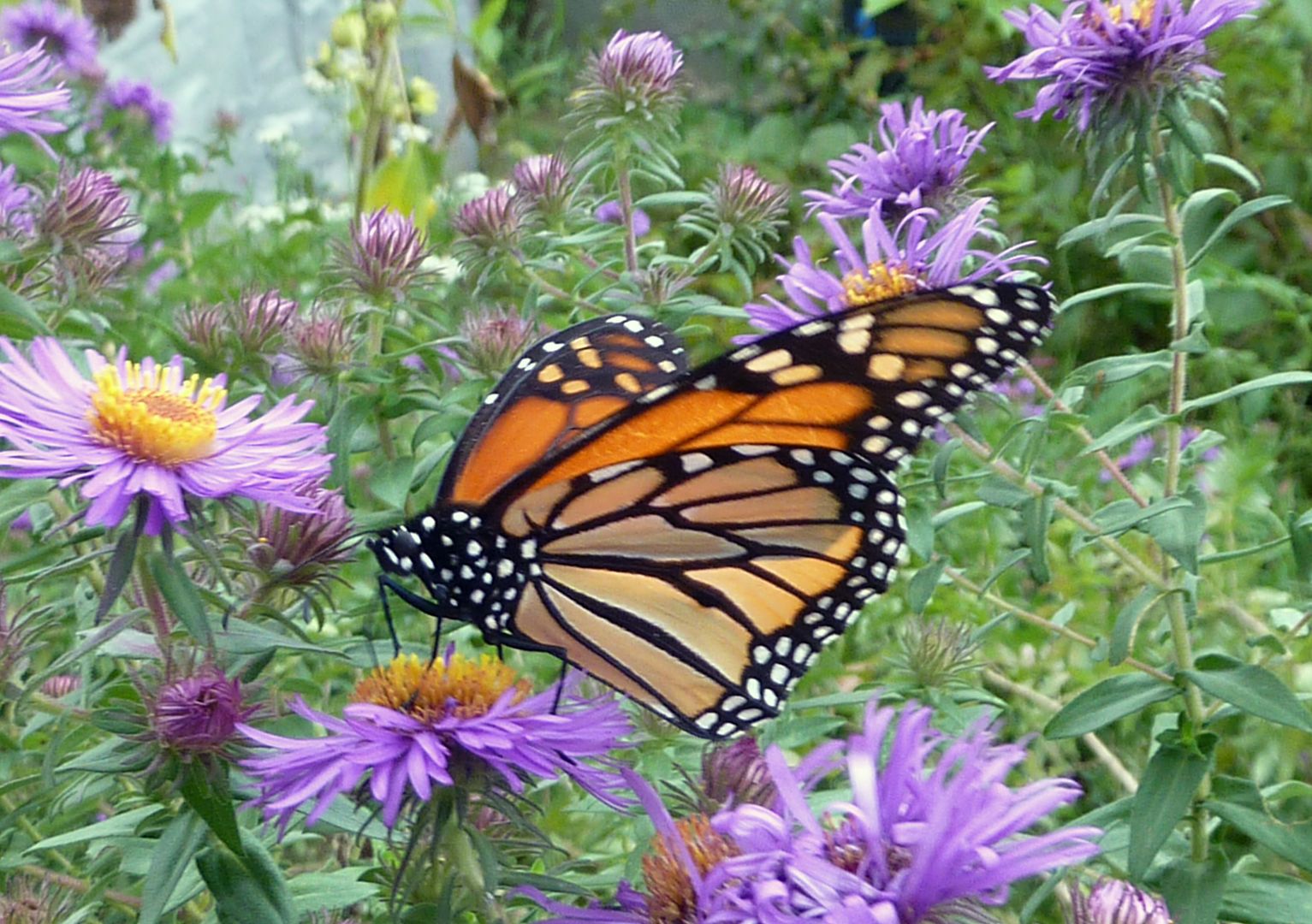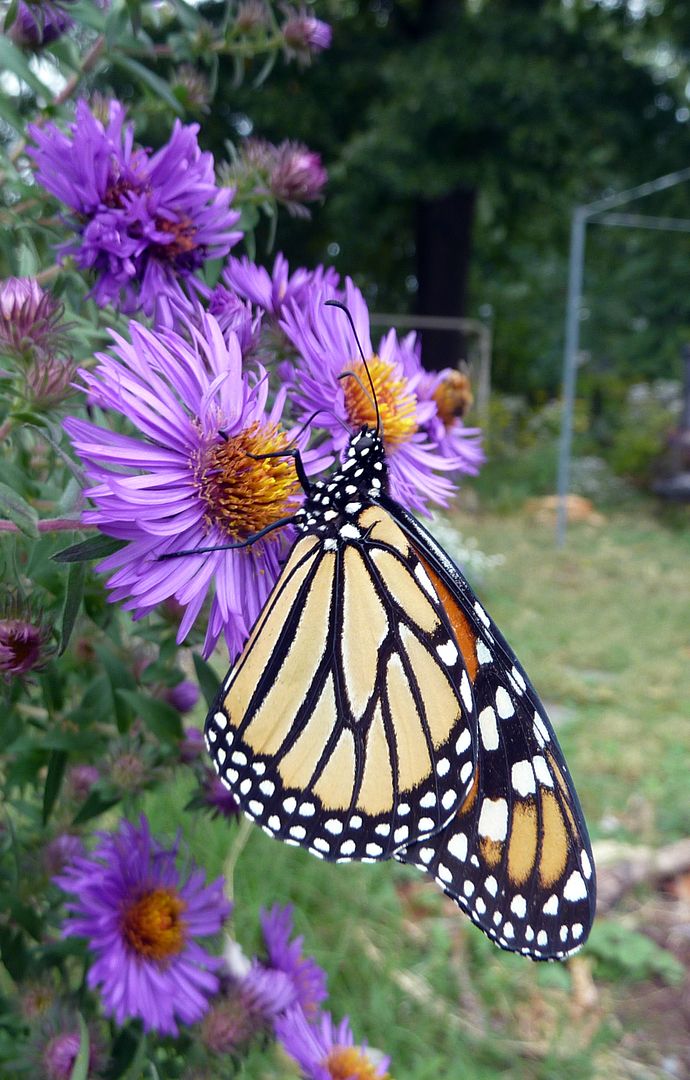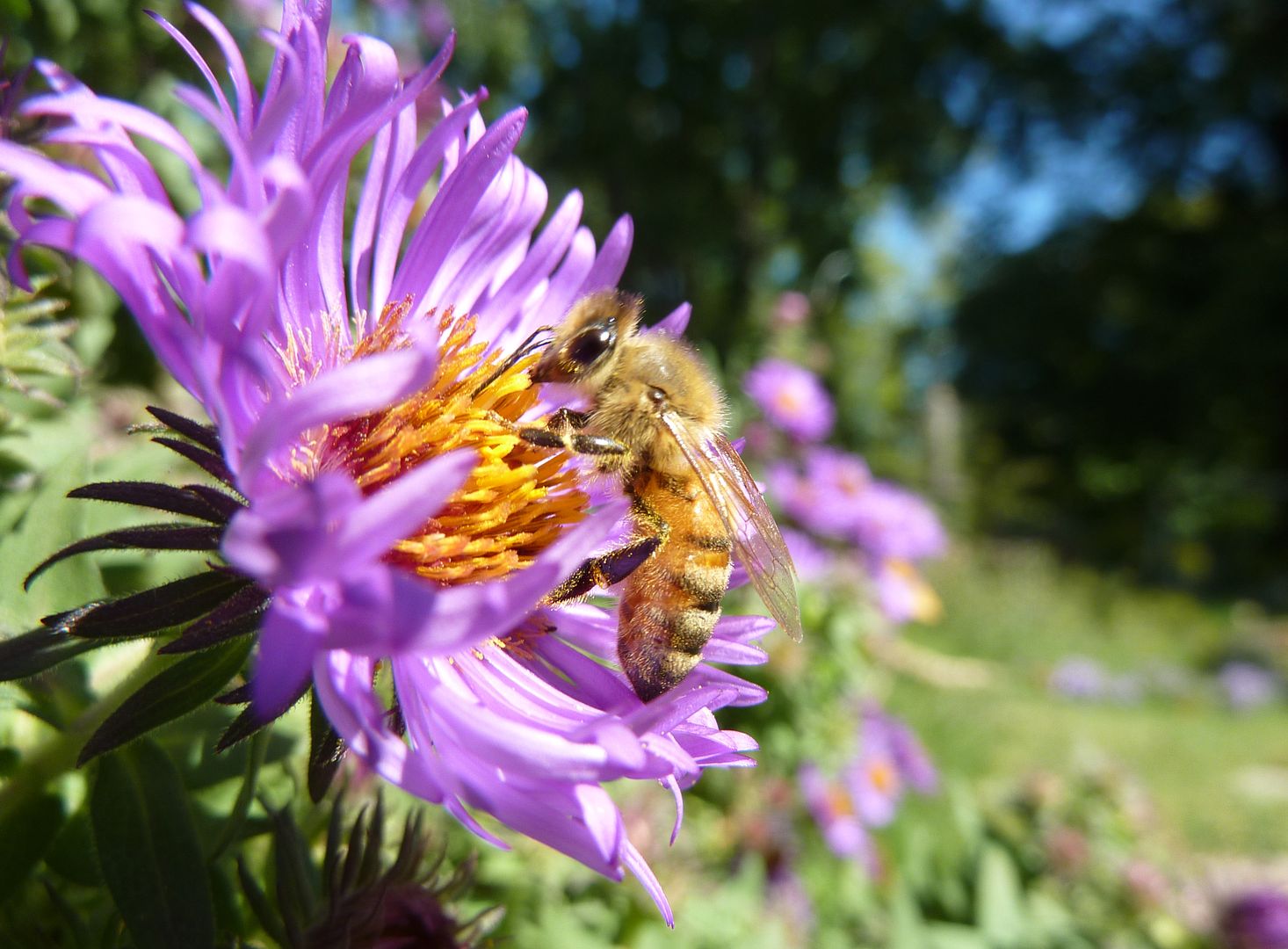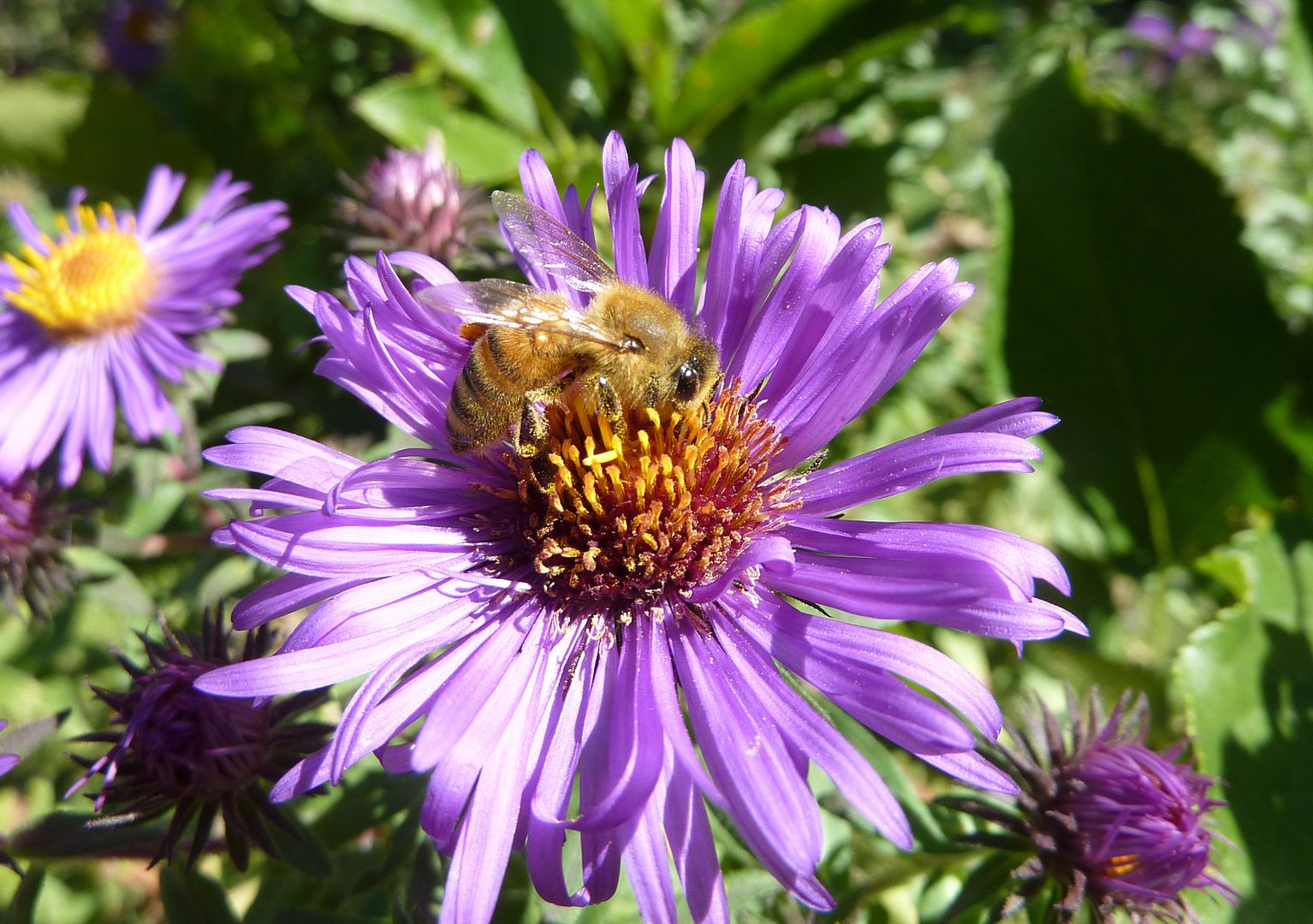Wednesday, October 24, 2012
Turkey Vulture and the uhhh...
A Turkey Vulture landed out front of our house to partake in some road kill... and then our cat got out and was like "I'm so gonna eat that bird that's bigger than me." We did stop him before he did something stupid, both animals are alive and well... but the squirrel isn't.
Tuesday, October 23, 2012
Elderberry
One of the plants featured in the upcoming book is the American Elderberry, Sambucus canadensis. As it so happened I was looking for plants to put in when I got a newsletter from the Mt. Cuba Center telling me about a class that weekend on Elderberries. And upon researching Elderberries apparently Honeybees help pollinate the flowers to increase yields at the end of the year. How could I say no?
Probably the most valuable thing I got from the class was what they meant by it being a "Suckering Plant." Elderberries are among the most vigorous growing plants you'll ever grow. They seriously push out 6' long stems in a year, and they don't stop growing until they reach 12' or so. Most places on the internet praise this plant for how "aggressive" it is at growing. HOWEVER! This is a very friendly plant and appropriate for any garden needing a large shrub.
All of the sucker come up at the trunk or close to the root ball. They do not come up anywhere that the roots have spread out to! Treat this plant like an ordinary shrub. (If you want an awful plant that does spread aggressively by root suckers along the roots, I recommend Trumpet Vine.) Pictured above are two Elderberry plants. One is allowed to grow into a 12' shrub. The other is cut back every year and is kept short to 6' as a result. Flowers occur on both new growth and old, the more sunlight the better, the more plants around, the better your fruit yields. If they get too much shade they won't fruit at all.
A fair amount of the class was devoted to jam making! This was the Mt. Cuba Center's first attempt at a food demonstration and boy was it a success.
Sadly they don't have a food license and we weren't able to take any home.
Probably the most valuable thing I got from the class was what they meant by it being a "Suckering Plant." Elderberries are among the most vigorous growing plants you'll ever grow. They seriously push out 6' long stems in a year, and they don't stop growing until they reach 12' or so. Most places on the internet praise this plant for how "aggressive" it is at growing. HOWEVER! This is a very friendly plant and appropriate for any garden needing a large shrub.
All of the sucker come up at the trunk or close to the root ball. They do not come up anywhere that the roots have spread out to! Treat this plant like an ordinary shrub. (If you want an awful plant that does spread aggressively by root suckers along the roots, I recommend Trumpet Vine.) Pictured above are two Elderberry plants. One is allowed to grow into a 12' shrub. The other is cut back every year and is kept short to 6' as a result. Flowers occur on both new growth and old, the more sunlight the better, the more plants around, the better your fruit yields. If they get too much shade they won't fruit at all.
A fair amount of the class was devoted to jam making! This was the Mt. Cuba Center's first attempt at a food demonstration and boy was it a success.
Elderberries can produce anywhere from 12 to 15lbs of fruit each year. If you're able to harvest them before the birds do, making jam is probably the best application. They showed us everything except for sterilizing the jars.
Sadly they don't have a food license and we weren't able to take any home.
So while we waited for things to be made, they fed us! Elderberry jam tastes just like Grape Jelly but without the grape flavor. Same texture and everything just not that acidic grape taste. It goes great with crackers and goat cheese.
After such a wonderful course I really didn't care that the plant I was give barely fit in my car. Pot included, the elderberry plant I got to take home was around 5' tall (6 months worth of growth, I'm told). Assuming it produces fruit next year you can bet I'll be making jam, or jelly, or a mess or something, next year!
Labels:
Berries,
Elderberry,
Food,
native
Monday, October 22, 2012
Monarchs Wave Good Bye
Now that I have a little break I might as well start posting again. Hopefully on a daily basis.
About two weeks ago I believe the last of the Monarchs passed through my area. I had a male and female on the New England Aster.
They weren't interested in one another at all, but sure loved the flowers.
Sadly I only got one Monarch caterpillar in my yard this year, and it did make it to adulthood. I'm not quite sure why though. Milkweed was the native plant I ever put in my garden and I've always had Monarchs visit. This year though I seemed to be seeing them everywhere except for my yard.
News of their migration this year has been confusing. Early reports varied from Record High Numbers to Record Low Numbers. Currently the Record Low reports seem to have won out.
About two weeks ago I believe the last of the Monarchs passed through my area. I had a male and female on the New England Aster.
They weren't interested in one another at all, but sure loved the flowers.
Sadly I only got one Monarch caterpillar in my yard this year, and it did make it to adulthood. I'm not quite sure why though. Milkweed was the native plant I ever put in my garden and I've always had Monarchs visit. This year though I seemed to be seeing them everywhere except for my yard.
News of their migration this year has been confusing. Early reports varied from Record High Numbers to Record Low Numbers. Currently the Record Low reports seem to have won out.
Tuesday, October 16, 2012
Announcement
Sorry for the lack of posts lately. I've been hard at work expanding my article Native Plants for Honeybees into a book. I pretty much have it all written and just need to format it. I'm hoping to have it done by the end of this month or the next. Announcement
Tuesday, October 2, 2012
Honeybees on New England Asters
New England Asters, Symphyotrichum novae-angliae, seem like they were made for honeybees to pollinate. I sat down for five minutes today with mine and it didn't take long before I had this photo. Granted there's probably 20 shots I didn't use, but the bees were making it easy.
The one fault of the New England Aster is it's a top heavy plant that always seems to fall over. I'm seriously considering espaliering the apple tree around it to hold it up. On the up side, fallen over limbs lead to neat side view shots like this.
The one fault of the New England Aster is it's a top heavy plant that always seems to fall over. I'm seriously considering espaliering the apple tree around it to hold it up. On the up side, fallen over limbs lead to neat side view shots like this.
Monday, October 1, 2012
Swamp Sunflower
Swamp Sunflower, Helianthus angustifolius, started flowering today. This is the latest flowering of our native sunflowers. This is a young plant I got from my recent trip to the Mt. Cuba Center, but despite it's age and limited flowers finding bees on it isn't uncommon. Sadly it's still rare enough that I can't get a good picture. Flowers are about the size of a Black-eyed Susan but I've read the plant itself can grow to be around 8' tall. Next year I'm expecting this to be a real show stopper. The flowers are so bright and happy looking they stand out even more than the Goldenrods in my garden.
Another trait I like is the dark center of the flower. I also have Helianthus maximiliani but I find the flowers to be boring because the centers are either yellow, orange, or a pale brown at best.
This species also goes by the name Narrow-leaf Sunflower because the leaves are narrow and grass-like. Here you can barely make them out with some of the overgrown toughs of lawn along the garden boarder.
Seeds to perennial sunflowers are an important food sources to over wintering birds. Sadly almost all of our native sunflowers are aggressive spreading plants and may require thinning our ever few years.
Another trait I like is the dark center of the flower. I also have Helianthus maximiliani but I find the flowers to be boring because the centers are either yellow, orange, or a pale brown at best.
This species also goes by the name Narrow-leaf Sunflower because the leaves are narrow and grass-like. Here you can barely make them out with some of the overgrown toughs of lawn along the garden boarder.
Seeds to perennial sunflowers are an important food sources to over wintering birds. Sadly almost all of our native sunflowers are aggressive spreading plants and may require thinning our ever few years.
Labels:
native,
Perennials,
Sunflower
Subscribe to:
Posts (Atom)
